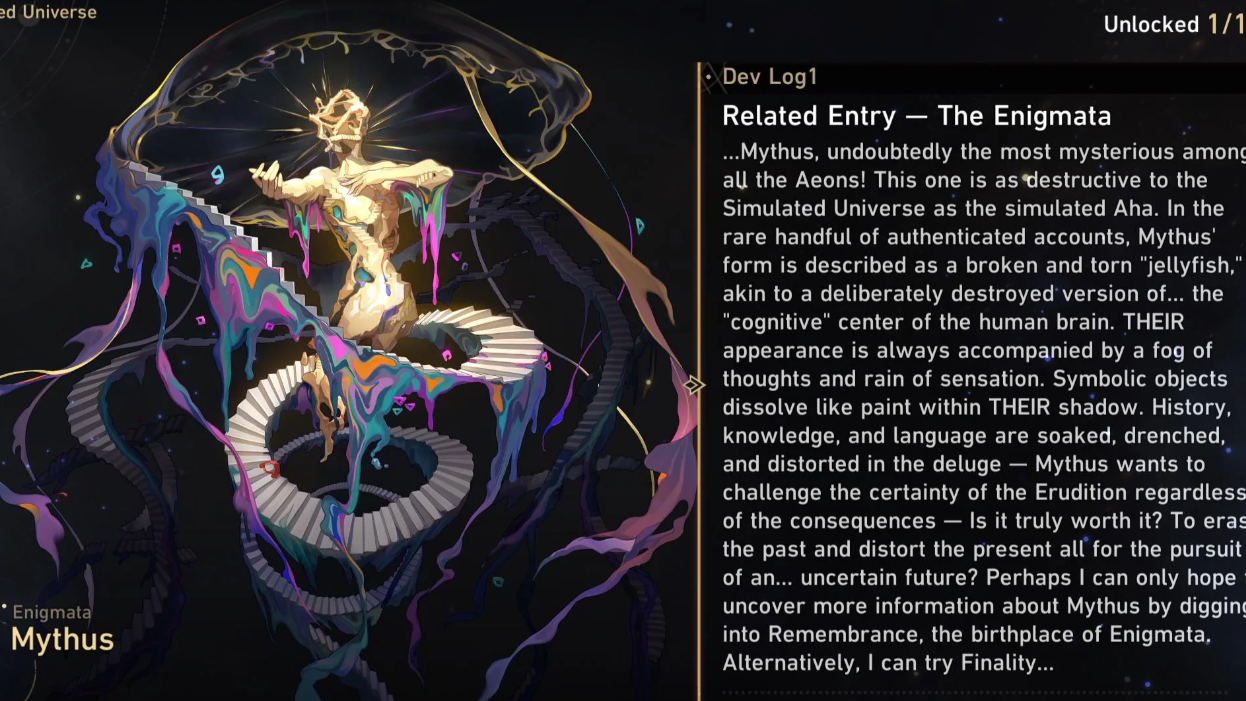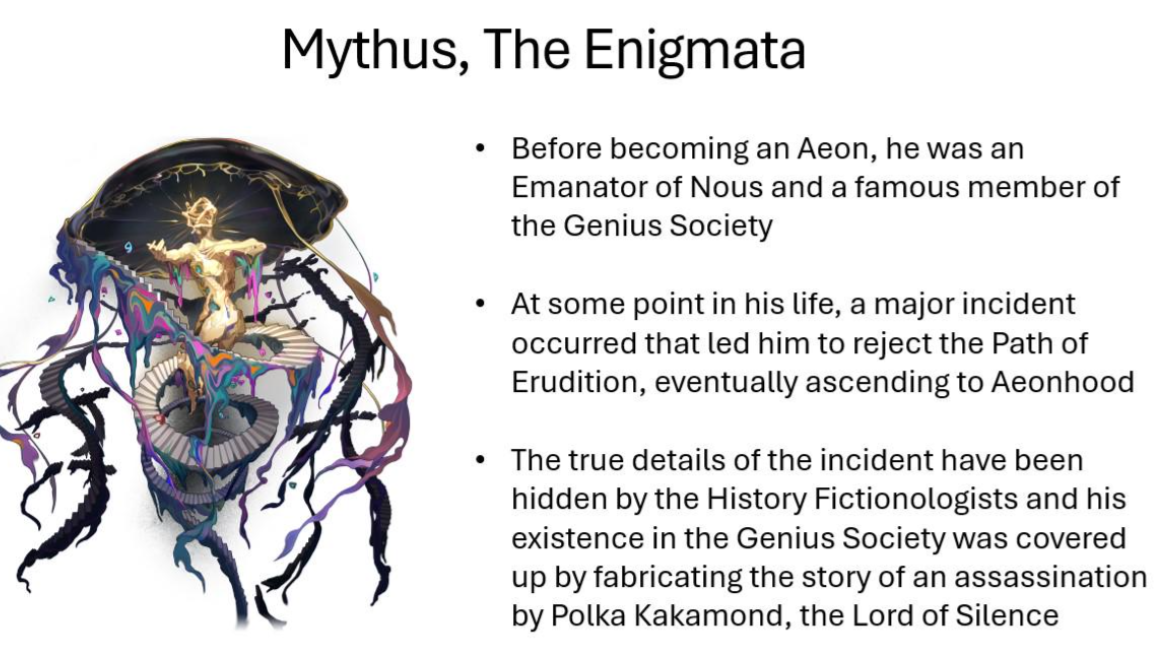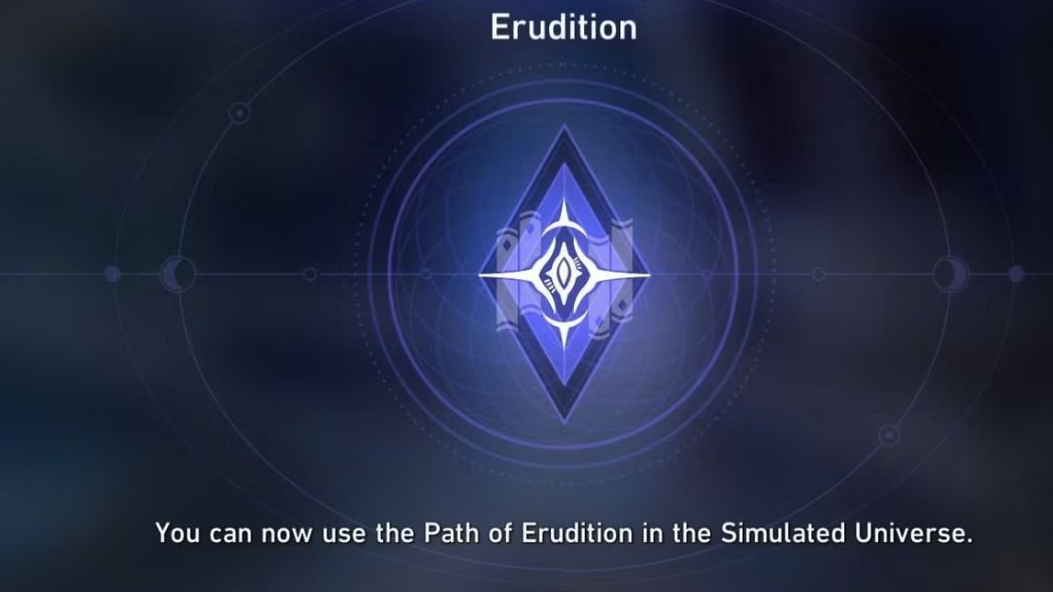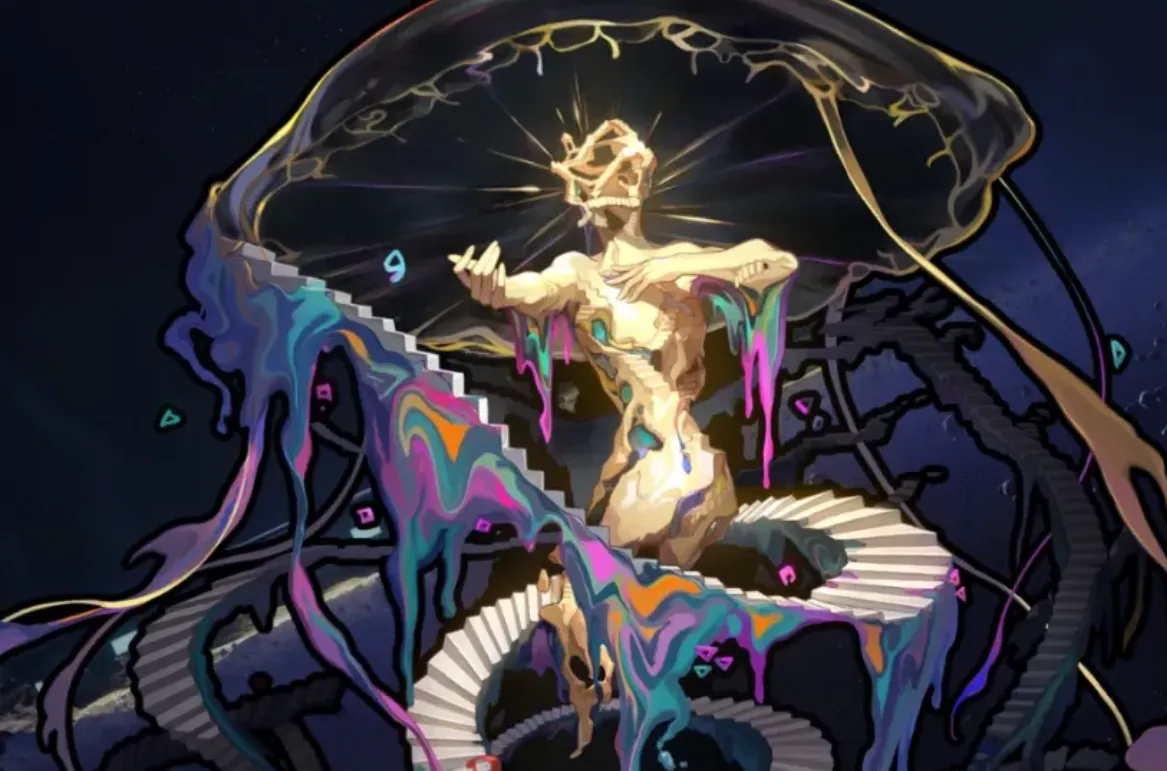Enigmata key facts (at a glance)
| Item | Summary |
|---|---|
| Path | Enigmata (non-playable in-game) |
| Aeon | Mythus |
| Core philosophy | Rejects certainty; posits that “things-in-themselves” are beyond perception and that finite beings cannot grasp true infinity. |
| Mythus’s instruments | “Fog of Thought” and “Rain of Sensation,” working through four agents: Morph, Screen, Riddle, and Mirage. |
| Aligned factions | History Fictionologists; The Riddlers. |
| Lore-associated figures | Evernight, Gallagher, Youci, Something Unto Death, Red-Nosed Old-Timer. |
| Playable status | No playable character currently embodies Enigmata as an in-game Path. |
What Enigmata is in Honkai Star Rail
Enigmata is one of Honkai Star Rail’s defined Paths, but unlike Hunt, Erudition, or Preservation, it isn’t selectable for play. In the game’s cosmology, each Path is guided by an Aeon; Enigmata falls under Mythus. The philosophy here runs counter to the idea that reality can be pinned down with complete knowledge. Instead, Enigmata leans into ambiguity: the notion that ultimate truth is inaccessible, that perception is limited, and that uncertainty keeps possibility alive.
Practically, Enigmata’s presence in the lore shows up wherever certainty is questioned—where records, language, and even memory get reframed so the future isn’t locked to a single interpretation of the past.

Mythus, the Aeon of Enigmata
Mythus presides over Enigmata and embodies its skepticism toward definitive knowledge. In official lore summaries, Mythus’s true form is not fixed or is left unknown. Across art and story beats, you’ll see motifs that play to the Path’s themes—obscured shapes, layered imagery, and symbols that resist a single reading—underscoring an Aeon devoted to keeping answers at arm’s length.

How Enigmata operates: fog, rain, and four agents
The Path’s methods are described in metaphor. Mythus “gifts” the Fog of Thought and the Rain of Sensation—devices for blurring the sharp edges of fact and feeling—then works through four agents: Morph, Screen, Riddle, and Mirage. Taken together, they set the stage where multiple readings can coexist:
- Morph suggests changeability and revision.
- Screen implies mediation—filters that obscure as much as they reveal.
- Riddle frames knowledge as puzzle rather than proclamation.
- Mirage offers convincing images that still evade capture.
The end goal isn’t chaos for its own sake; it’s to prevent knowledge from hardening into a single, “inevitable” path forward.
Factions aligned with Enigmata
Two groups carry Enigmata’s banner most visibly across the setting:
- History Fictionologists: Cultural saboteurs who alter, fabricate, or erase historical record to keep futures open. By breaking the monopoly of any one narrative, they aim to protect possibility itself.
- The Riddlers: Language tinkerers who dismantle certainty in communication—through inverted syntax, layered metaphors, and semantic traps. If words can’t perfectly pin meaning, certainty slips.
Neither faction conquers with armies. Their battleground is interpretation—of archives, testimony, and words.
Characters tied to Enigmata (lore)
Several figures in Star Rail’s story orbit Enigmata’s ideas without making the Path playable. Notable names include Evernight and Gallagher, along with Youci, Something Unto Death, and the Red-Nosed Old-Timer. Their roles vary, but the throughline is consistent: they lean on uncertainty—lies that become possibilities, memories that behave like mirrors rather than windows, and records that can be rewritten.
Crucially, there’s still no way to run an Enigmata build. The Path influences events and people, but it’s not on the roster for players.
Where Enigmata fits among other Paths
Enigmata’s friction point is with “certainty” as championed by frameworks like Erudition. Erudition trusts the map; Enigmata questions whether the map can ever match the territory. That tension threads through recent story arcs where memories, prophecies, or official histories carry material consequences. If a record can be altered, so can the future it was set to justify.

What to watch for next
Expect Enigmata to keep showing up at the edges of big story turns—where a single truth would foreclose too many paths. For now, treat jellyfish-like symbols and spirals, riddled dialog, and scrambled chronicles as the telltale signs: Enigmata is in the room when answers multiply.


